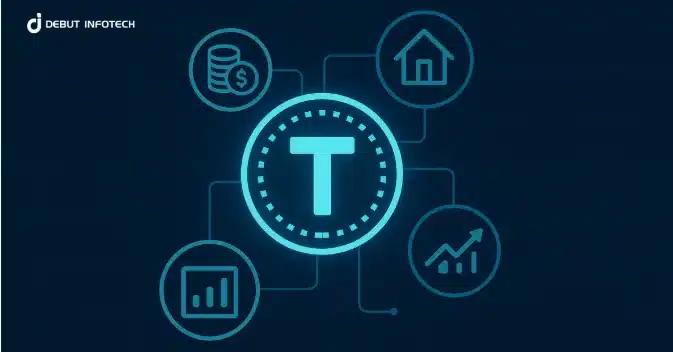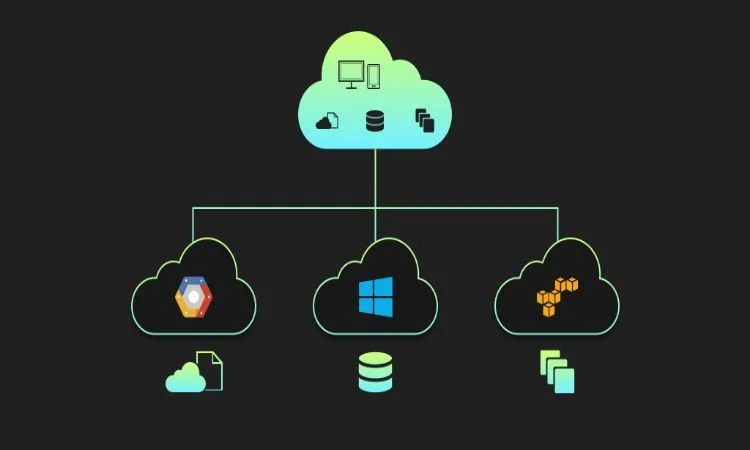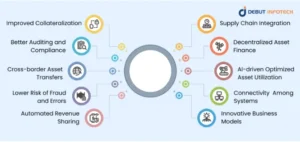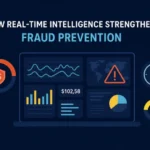What are the Benefits of Tokenization for Enterprise Asset Management?

Tokenization provides enterprises with a simplified method to track, trade, and secure their valuable assets.
Frankly, enterprises have been doing these things manually long before tokenization became a cool thing. However, with the help of blockchain technology and tokenization, they can now do it better, faster, and more accurately.
You see, Enterprise Asset Management (EAM) has always been about monitoring an organization’s assets to ensure their longevity and optimal performance. It’s all about saving money and maximizing the value of every asset, and tokenization helps businesses achieve just that.
In this article, weprovide tangible answers to the question: ‘what are the benefits of tokenization for EAM?” We also hint at some more general benefits of asset tokenization.
But first, let’s get a basic idea of the core themes of these concepts.
Understanding Enterprise Asset Management (EAM) Through Tokenization
When a business or organization manages its assets through tokenization, it means that every detail about an asset, such as when it was purchased, repaired, or used, is connected to a digital token representing that asset.
Like a flawless, infallible history book, this data is fixed and simple to verify.
This means there will be no more confusion or missing paperwork!
AI tools are also better able to analyze asset performance thanks to this clear data.
As a result, it becomes incredibly easy for the business to manage operations on that asset. For example, consider how simple it would be to sell a small portion of a large factory. Platforms for real world asset tokenization allow you to do just that!
That’s not all.
Large assets, such as company equity or real estate, can also be divided into numerous small tokens.
This makes it easier to buy and sell, as more individuals or departments can own a piece (fractional ownership), as opposed to when only institutional investors could buy them as a whole. The use of digital systems facilitates payments and attracts new capital (such as NIP for fast transfers).
As a result, asset development becomes more inventive and flexible.
Tokenization relies on major technological infrastructures, such as smart contracts and blockchain technology. Smart contracts are like automatic, immutable agreements written into code governing the management of these tokenized assets. With specific rules embedded within them, once the conditions of the rules are satisfied, the smart contracts automatically trigger the appropriate action without requiring any further manual intervention.
Isn’t that so cool?
For instance, a smart contract can automatically pay the repair company when a machine is fixed.
This reduces the need for numerous middlemen, human error, and paperwork. Because everything is done automatically and transparently, it greatly increases trust. All of this is set up with the aid of tokenization companies.
To put it briefly, tokenization functions as a digital enhancement for managing a business’s priceless assets. It increases the efficiency, transparency, tradeability, and reliability of everything. The goal is to apply the power of digital technology to the tangible assets of the business.
So, what are the benefits of tokenization, specifically for enterprise asset management?
Let’s explore this in the next section.
What are the Benefits of Tokenization for Enterprise Asset Management?
How can blockchain tokenization help in enterprise systems?
The following are the benefits of tokenization for enterprise asset management:
1. Improved Collateralization
Tokenization significantly enhances the value of tangible assets, such as gold and real estate, as collateral.
Here’s why:
On a transparent blockchain, the existence, ownership history, and value of an asset can be instantly verified by representing the ownership of a physical asset, such as gold or real estate properties, as a digital token on a tokenization platform.
As a result, the lender takes on less risk because the physical properties are still securely stored away. Due to the decreased lender risk brought about by this transparency, businesses can obtain loans or funds against their assets more quickly and easily.
Therefore, capital is now more easily accessible and verifiable, and future asset development projects can be greatly accelerated by this improved efficiency in leveraging current assets.
2. Better Auditing and Compliance
Thanks to the stable nature of blockchain data produced by tokenization platforms, all company assets have an immutable audit trail. This means that all associated token transactions, maintenance logs, and ownership changes are permanently recorded and stored.
This provides auditors with a single, reliable, and fixed source of truth, significantly streamlining auditing procedures.
Consequently, this minimizes the manual labor and risk of fines for enterprise asset management businesses and departments. Moreover, it facilitates smooth compliance with detailed regulatory requirements and compliance standards.
3. Cross-border Asset Transfers
Seamless cross-border transfers has always been one of the long-standing challenges of enterprise asset management. However, it also presents as a wonderful opportunity for the supply chain industry to experience the benefits of tokenization platforms for businesses and real estate are now revolutionizing this critical issue using the borderless nature of blockchain networks.
They eliminate the usual challenges, hold-ups, and exorbitant costs that is commonly associated with the use of numerous middlemen and disparate legal systems, allowing the safe and easy transfer of equity tokenization and other tangible assets across international borders.
Integrated payment rails further accelerate these transactions, opening up international markets for asset development and investment opportunities for business funds.
4. Lower Risk of Fraud and Errors
Enterprise asset management encompasses numerous routine tasks and paperwork. Handling all these processes manually, greatly exposes the organization to serious risks of errors and fraudulent activities.
However, the fact that tokenization platforms leverage the core security features of blockchain technology significantly lowers these risks.
By transforming physical assets into distinct, verifiable digital tokens, there is a lower chance of asset duplication or fraud. The blockchain network ensures a stable and secure data record, thus maintaining the integrity of asset ownership or transactions. This built-in trust enhances overall operational security by shielding business assets and funds from illicit activity.
5. Automated Revenue Sharing
Tokenization enables the automation of complex financial distributions through smart contracts.
Remember we highlighted the fact that smart contracts self-execute once contract conditions have been met?
That’s how they facilitate revenue sharing.
Revenue can be automatically collected and allotted proportionately to the digital wallets of token holders for tokenized equity (such as dividends) or real estate (such as rental income).
This ensures timely payouts, reduces administrative overhead, eliminates manual accounting, and makes the distribution of funds transparent and efficient.
This automation streamlines financial operations for company assets, enhancing investor confidence.
6. Supply Chain Integration
Tokenization can be used to represent products in a company’s supply chain, going beyond simple ownership.
While this use case might seem like just another illustration of the blockchain’s distributed ledger network, its effects have greater business impacts. For instance, businesses can achieve unmatched visibility by generating digital tokens for components, raw materials, or completed physical assets as they pass through production and distribution on a tokenization platform.
This enables accurate tracking, reduces counterfeiting, enhances recall efficiency, and ensures compliance from origin to deployment. All these benefits significantly improve enterprise asset management by providing verifiable data on provenance, authenticity, and movement at every stage.
7. Decentralized Asset Finance
Tokenization companies are developing innovative methods for raising capital for asset development by applying the principles of decentralized finance (DeFi).
Here’s how this works:
Companies can issue asset-backed tokens or tokenized securities directly to a global investor base through a tokenization platform. As a result, they don’t need to go through traditional banks or venture capital firms.
This increases capital accessibility, reduces the need for intermediaries, and can significantly reduce the cost and duration of raising capital for various physical assets.
8. AI-driven Optimized Asset Utilization
Tokenization enables business assets to generate substantial volumes of verifiable data regarding their condition, performance, and usage.
This rich dataset enables Enterprise Asset Management (EAM) to accurately identify underutilized or inefficient assets when fed into AI algorithms.
To maximize operational efficiency and return on investment, AI can, for example, evaluate tokenized real estate occupancy or machine usage to optimize scheduling and deployment. This can also help businesses forecast maintenance requirements, or even suggest when to replace or develop assets more precisely.
9. Connectivity Among Systems
Tokenization platforms promote cross-departmental collaboration by giving assets a common digital language.
This implies that information about tangible assets can be exchanged and integrated seamlessly between various enterprise systems, including financial platforms, ERP systems, and current Enterprise Asset Management (EAM) software.
Without the need for expensive custom integrations, this eliminates data silos, improves data consistency, and enables a thorough view of the company’s assets. Furthermore, it simplifies the reporting and decision-making process for intricate, diverse asset portfolios.
Enterprise solutions like xAssets provide a comprehensive IT and asset management platform that complements tokenization by enabling seamless data sharing, tracking, and lifecycle management across departments—learn more at xAssets.
- Innovative Business Models
Finally, tokenization can help enterprise asset managers innovate and develop novel assets and monetization strategies.
Fractional leases is a classic example of these innovative business models. In place of full, long-term leases, tokenized real estate, for instance, can facilitate micro-leasing, in which individuals or companies pay for specific usage periods or even cubic meters of space.
Beyond conventional ownership models for business assets, tokens representing shares of gold or carbon credits can also be bundled or unbundled for specific use cases, creating entirely new markets and revenue streams.
Conclusion
Tokenization is not only revolutionizing enterprise asset management, but it’s also enhancing business operations and efficiency.
By making high-value assets more liquid and allowing fractional ownership, tokenization creates new financial opportunities that can catapult a business to the next level.
But that’s just even the tip of the iceberg.
It also improves collateralization, facilitates better auditing & compliance, lowers the risks of errors and frauds, and does a whole lot of awesome things for businesses looking to handle enterprise asset management better.
Wouldn’t you love to tap into those amazing benefits?
If you would, then you need the assistance of a real estate tokenization company like Debut Infotech Pvt Ltd for seamless implementation.
Reach out today to start managing your enterprise assets with tokenization!

Why Smart Startups Choose Custom AI Business Solutions Today

How to Optimize Business Operations with Vending Machines in Australia

How a portable office for sale can streamline on-site operations and boost productivity

Onsite Tire Change in Ottawa : Safe Fast & Professional Tire Services

Accelerating drug discovery through the DEL-ML-CS approach

Top Reasons Law Firms Are Replacing Call Centers With TeleWizard

5 Common Multi-Cloud Networking Mistakes & Fixes

Eye-Catching Composition Techniques Using Action Camera Wide-Angle Lenses









